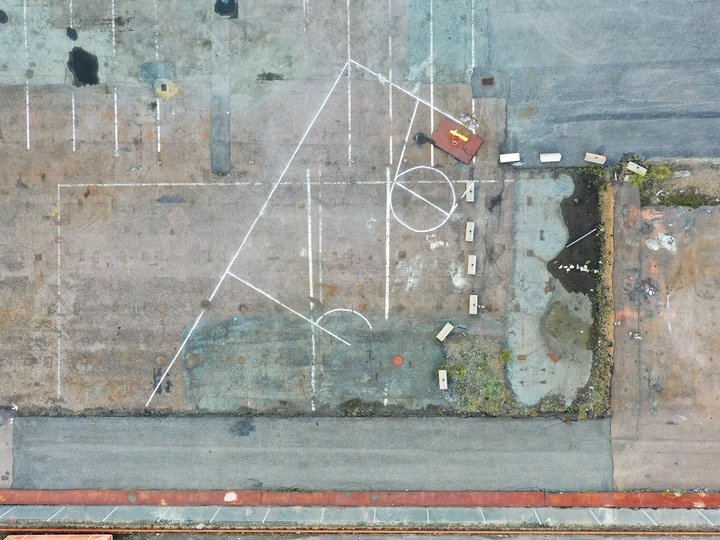Experiments, imaginaries, desires

Pia Palo
Pia Palo is an architect and urban designer currently based in Gothenburg, with an interest in public space, collaborative work, and explorative design practices. She holds a BFA from Umeå School of Architecture and an MSc from Chalmers School of Architecture.
In recent decades, the dominant paradigm of top-down, profit-driven urban development has been institutionalized by decision-makers in cities. It leaves no space for alternative imaginaries, but rather tries to exert full control over the definition of how cities should be developed and used.
Situated in the specific context of Lundbystrand, an ex-industrial part of central Gothenburg that is being transformed into a cluster for tech and automotive industries, the project critically examines the political agendas that have shaped the area. Market-driven development has led to demands for an ordered, clean, safe, and tidy urban form that conflicts with spontaneous appropriation of space and bottom-up initiatives.
In response to this, the project examines the role that subjective experiences, and the expertise of non-architects, can play in shaping the way that cities are developed and used. And how architectural tools, representations, and actions can allow these experiences to be kept at the center of the way that architects work. As a possible way to act differently, the project explores the potentials of micro-scale design experiments. Both as a method that challenges who can take action in the public realm, and as a way to actively engage with existing local actants, human and non-human.
The micro-scale refers to a way of thinking and doing that emphasizes the importance of local and decentralized actions. Rather than imposing grand plans and programs from the top-down it can be developed and refined over time, allowing for continuous evaluation and adaptation to shifting demands on public space.
Therefore, rather than resulting in a design proposal, the project shows how experimental design processes can generate the capacity to produce collective and individual imaginaries and actions, initiating a dialogue about whose desires dictate the visions of the future.